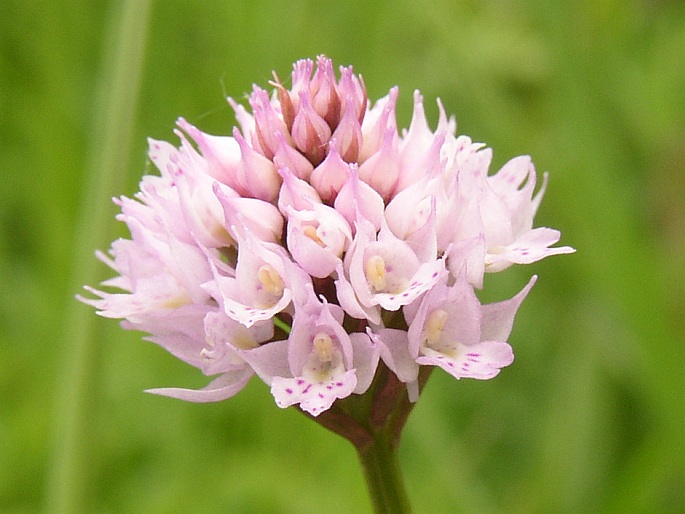Syn.: Nigritella globosa (L.) Rchb., Orchis globosa L., Orchites globosus (L.) Schur
Family: Orchidaceae Juss.

Distribution: Mountains of southern and central Europe, from the Pyrenees through the Alps and Carpathians to the Balkan Peninsula and Asia Minor.
Ecology: It grows in meadows and pastures, mainly in the mountains, at elevations from 500 to 2700 m asl. Blooms from June to July.

Description: Perennial herb with ovoid tubers. Stem 15–70 cm tall, erect, with 2–3 oblong-lanceolate or subobovate leaves. Spike pyramidal-globose, becoming ellipsoid, 1,5–6 cm long and 1.5–3 cm wide; bracts lanceolate, as long as or longer than the ovary; flowers pinkish-lilac, sometimes whitish, but always with purple spots, outer perianth-segments 5–6 mm long, inner slightly shorter, lip almost square, 3-lobed, 3,5–8 mm long, glabrous, lateral lobes ovate, obtuse or acute, middle lobe broadly oblong; spur short, 3 mm long, cylindric-conical. The fruit is a capsule.
Threat and protection: This species is protected in some European countries (BG, CZ, HU, PL, SK), also is protected by the Convention on International Trade in Endangered Species of Wild Fauna and Flora (CITES).
Note: The genus Traunsteinera contains only 2 species, closely related and similar Traunsteinera sphaerica occurs in the Caucasus and the mountains of northeastern Turkey.




These images were taken in Czechia, Moravia, Hostýnské vrchy, Pod Kozincem; Bílé Karpaty, Porážky and Čertoryje; Hrubý Jeseník, Velká kotlina (from May 31 to July 11, 2003).


